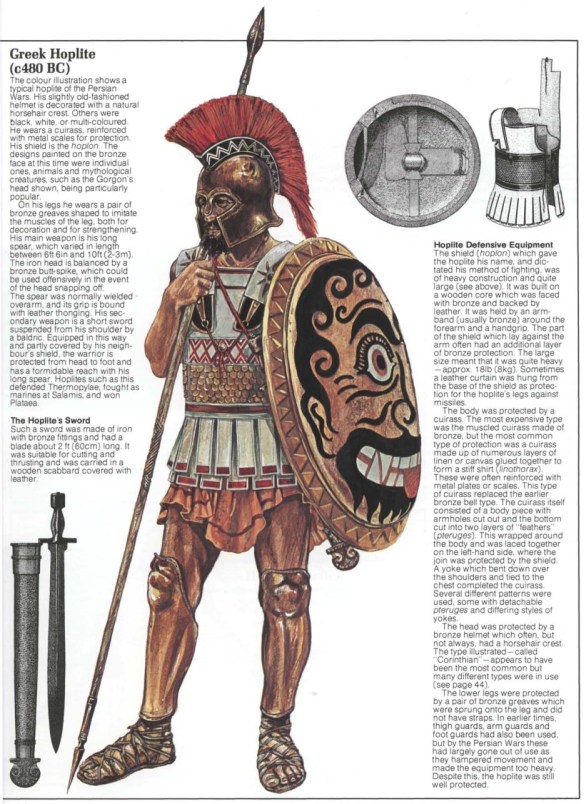A shift in ancient Greek social and political organization resulted in the emergence of the hoplite military structure, which represented the land- owning classes with a stake in society, replacing the aristocratic military caste that preceded it. The Greek Dark Ages (1200-1800 BCE) had been characterized by horse-mounted warriors representing the wealthier strata of Greek society. The hoplite reform that emerged at the end of this period resulted in the inclusion of citizen- farmers of the evolving city-states, which while granting political representation also required military obligations for the defense of the state. The hoplite structure also created new tactical military strategies exemplified by the phalanx.
For 300 years, between approximately 650 and 350 BCE, the hoplite military structure dominated the Greek world. During this period, no other military tactic was able to engage the Greek phalanx effectively. The phalanx consisted of a close formation of heavily armed warriors, characterized by their round shields known as hoplons. They also carried a long spear, usually as long as the height of the soldier. In terms of armor, they would have a breastplate, which made them vulnerable at the neck and at the groin. It did not provide any protection for the back. Hoplites would also have greaves to protect their legs, from their kneecaps to their ankles. A Corinthian helmet would cover most of their face but would allow limited eyesight for close combat. Leather padding would create a level of protection for the hoplite, but a strong enough impact could still cause considerable bodily harm.
The main difference between the hoplite phalanx and previous and subsequent military procedures in ancient Greek tactical formations is the efficient combination of military service with the civilian sense of duty to the nation-state. The inclusive and egalitarian nature of the phalanx placed friends, family, and locals fighting for the defense of the community and for esprit de corps. Rather than reliance on a caste of elites fighting in a small-scale engagement, the phalanx pitted citizen-soldiers from one polis (city-state) against another. The auxiliary forces in the form of archers and skirmishers were typically formed from the lower strata of the city-states and did not command much respect in the hoplite ranks.
Distinctive military traditions emerged as a result of the development of the hoplite organization. Among the most famous example is the city- state of Sparta, renowned for the military prowess and the lifelong commitment of its hoplites. Young boys would enter military training at the age of five and carry on in military life past middle age. The spirit of fighting for the honor and glory not only of the city-state but also for family honor was important for Spartans. The weight of the armor necessitated Spartans to maintain a proper physique, which resulted in intense physical preparedness in the form of gymnastics and an intense exercise regime. Strength and agility were necessary to be able to carry heavy armor while engaging in battle. Other Greek city-states maintained comparable rituals to those of the Spartans in regard to physical preparedness.
Bibliography Hanson, Victor Davis, ed. Hoplites: The Classical Greek Battle Experience. New York: Routledge, 1991. Lendon, J. E. Soldiers and Ghosts: A History of Battle in Classical Antiquity. New Haven, CT: Princeton University Press, 2005. Martin, Thomas R. Ancient Greece: From Prehistoric to Hellenistic Times. New Haven, CT: Yale University Press, 2000.
